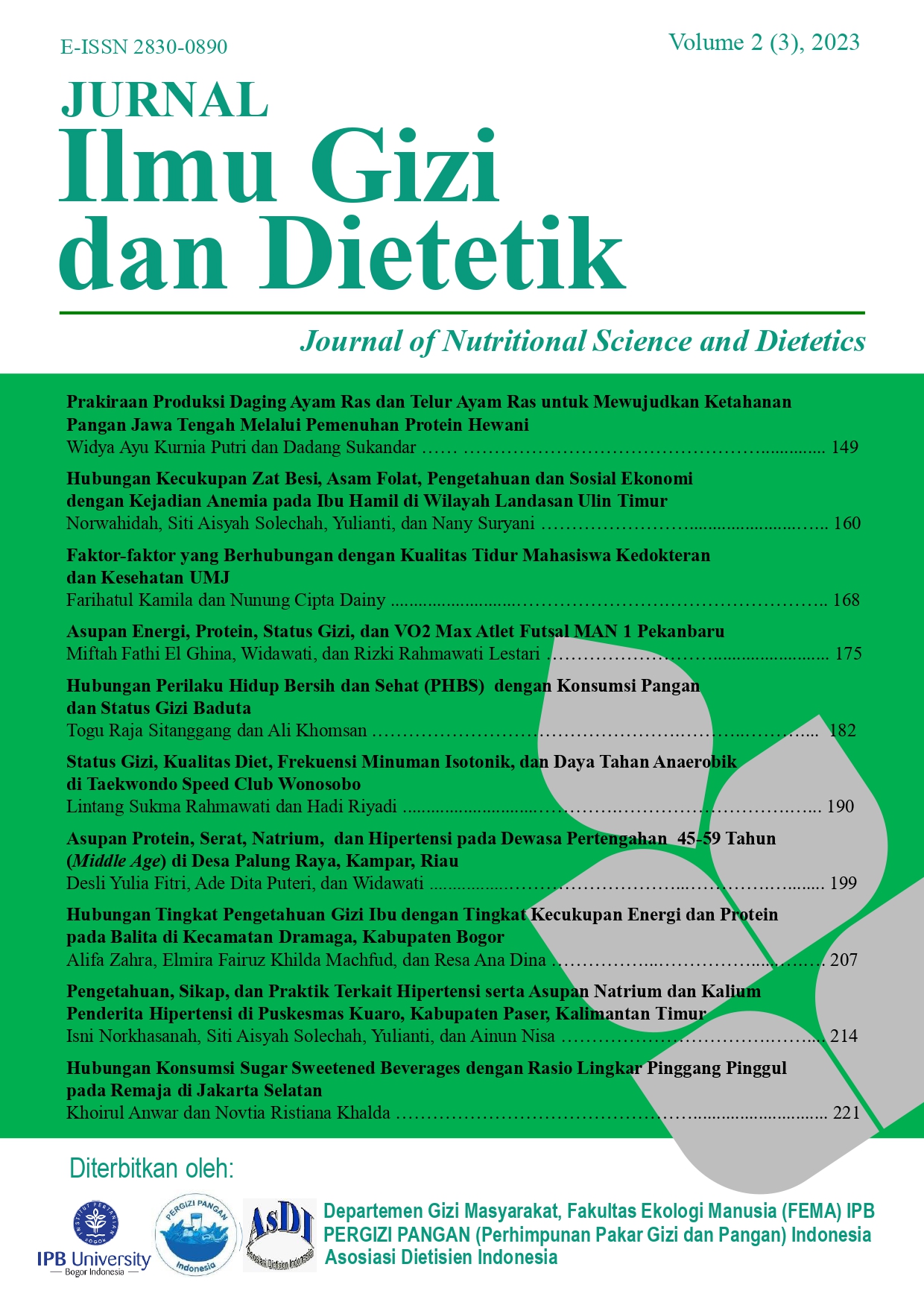Hubungan Konsumsi Sugar Sweetened Beverages dengan Rasio Lingkar Pinggang Pinggul pada Remaja di Jakarta Selatan Correlation Between Consumption of Sugar-Sweetened Beverages and Waist Hip Circumference Ratio in Adolescents in South Jakarta
Abstract
Overnutrition is still a nutritional problem whose prevalence is increasing from year to year. One of the factors that influences the occurrence of excess nutrition is excess energy intake, including energy intake from sweetened drinks. This study aims to identify the relationship between the consumption of sugarsweetened beverages and the overweight status of adolescents in South Jakarta. The research design was cross-sectional, with 80 young respondents aged 16-18 years who were selected by consecutive sampling. Data on consumption of sugar-sweetened beverages were obtained from the BEVQ-15 (Beverage Questionnaire) questionnaire for the past month. Relationship test analysis using Spearman's rank test. The distribution of respondents based on RLPP status in male and female subjects was 40% of respondents not at risk of Non-Communicable Diseases (PTM) and 60% of respondents had risks of Non-Communicable Diseases (PTM). The frequency of consumption of sugar-sweetened beverages in soft drinks was 85.5% and milk was 100% in respondents at risk. The results showed that there was a relationship between the frequency of consumption of sugar sweetened beverages and the waist-hip ratio of respondents who consumed soft drinks (p<0.05) and milk (p<0.05). The conclusion in this study is that there is a relationship between the consumption of sugar-sweetened beverages and the waist-tohip ratio in adolescents in South Jakarta.

